Best camera for low light photography in 2022
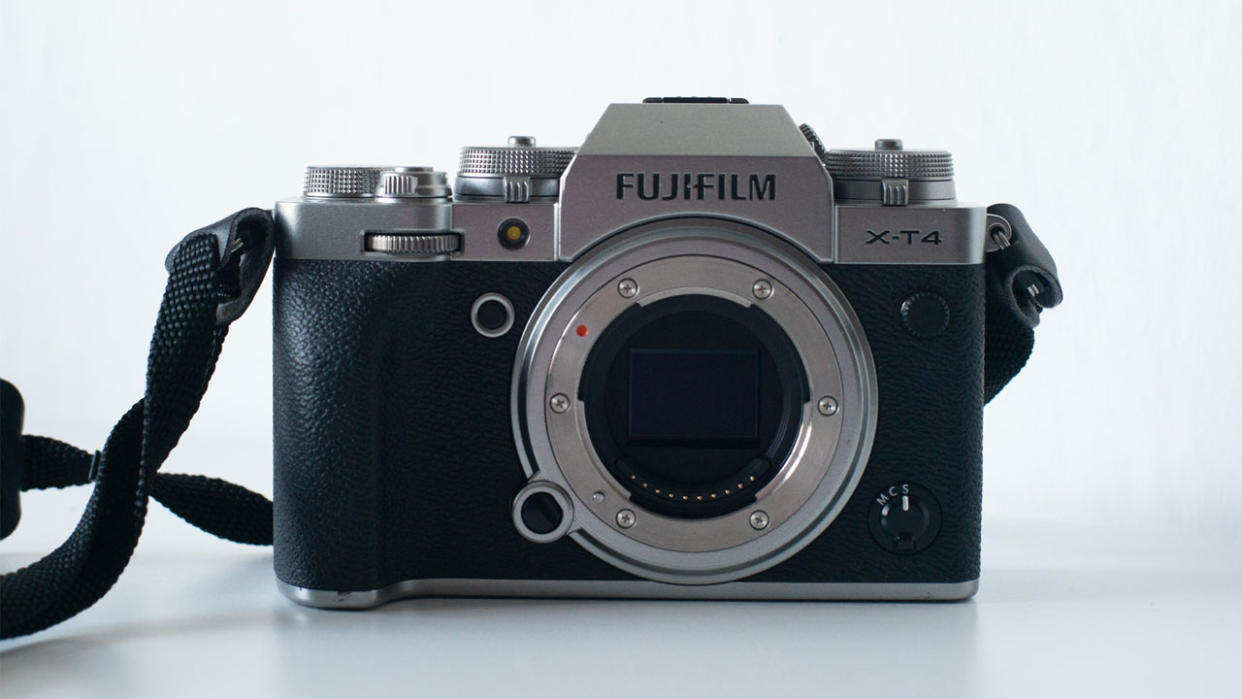
Even when using the best camera for low light photography, shooting images in low light conditions is notoriously tricky.
Related articles
Best cameras for photos and videos
Best cameras for astrophotography
Camera deals: discounts on cameras
Best mirrorless cameras
Best DSLR cameras
After all, cameras are designed to capture and record light, so if there's less light, it's harder for the camera to do its job. But with ever-advancing technological progression, we've seen digital cameras shine in recent years producing some absolutely incredible results even on the darkest days. There are a few things you should look for when considering whether or not to purchase one of the best cameras for low light photograph.
Choosing the best camera for low light photography: What to look for
The first step to acquiring the best camera for low light photography is to look for its ability to ramp up light sensitivity, outlined in its ISO range. The higher the ISO sensitivity, the better the camera will capture well-exposed images in dark scenes. However, higher ISOs also bring more image noise, distorting the photograph or video. Therefore, a larger image sensor (preferably with slightly fewer megapixels) is preferred as it physically takes up more space and can capture more light.
RAW file shooting is also important since these picture and video files contain much more data to edit later in post-processing software, meaning exposure can be enhanced and image noise can be eradicated.
Autofocusing helps maintain sharpness on a subject, but when things go dark autofocus systems in cameras can struggle. That's why looking at the lowest exposure value (EV) range is essential, as the lower the number, the better it will be at autofocusing in low light. It's what we look for in our best cameras for astrophotography too.
Other features include in-body image stabilization, which can steady stills photos and keep handheld exposures sharp without needing a tripod, or smooth out shaky video footage. In addition, finding a camera with a fast lens, (or an interchangeable lens system that offers wide aperture lenses) helps maximize light input through the image sensor. If you need lens advice, we have guides to the best lenses for astro, and the best zoom lenses.
Size, weight, compatibility, and ergonomics play a significant role in the choice you make to get your favorite low-light shooting companion, and we know price does too. We've included a wide range of cameras so there's something for you, no matter your skill level or budget.
Best cameras for low light photography in 2022
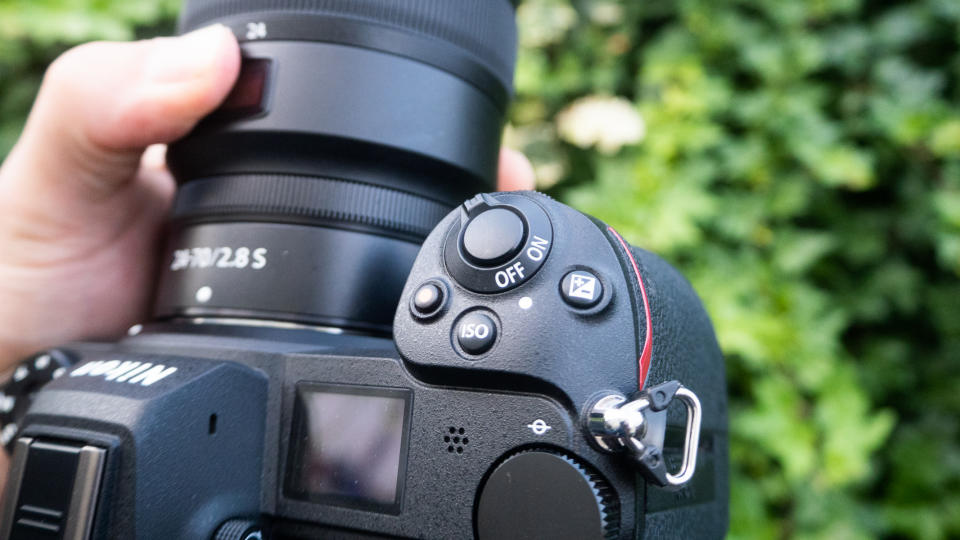
Nikon Z6 II
Best camera for low light photography overall, the Z6 II has great low light autofocusing and exposure metering
Type: Mirrorless | Sensor: Full frame | Megapixels: 24.5 | Lens mount: Nikon Z | ISO Range: 100-51,200 (expandable 50-204,800) | Stabilization: 5-axis sensor-shift
5 stops of image stabilization in-body
Great range of Z-mount lenses perfect for low light
Good value for money, especially for enthusiasts
ISO range isn't the widest in its class
Not enough difference to upgrade from the Nikon Z6
Part of the issue when shooting in low light is the ability to use autofocus, which hunts and struggles when there's less light. Fortunately, the Z6 II (and original Z6) has one of the best autofocus and exposure metering systems of any camera and can autofocus in the dark down to -6EV.
Due to this, the camera can take advantage of its eye-detection autofocus and animal-detection autofocus which automatically tracks focus on subjects without any correction from the photographer. That makes it easier to get sharp portraits and pets even when indoors or outside during twilight hours.
Its ISO handling is also impressive, with minimal image noise in stills photos. That's all thanks to using the same image sensor as its more expensive pro model the Z7 II (see the review for the Z7 II) but a drop in resolution, which can help alleviate noise. While not quite the highest ISO range in its class, it's more than capable for any type of low light shooting thrown at it as it reaches 51,200 natively or expands up to 204,800.
Keeping shots steady in low light is tricky because longer shutter speeds must be used to gain valuable light input for images and video. Still, the Z6 II's 5-axis in-body image stabilization provides up to five stops of stabilization. This also applies to older F-mount lenses initially designed for Nikon's DSLR camera bodies and endows lenses that don't have stabilization with up to 3-axis stabilization for steadier shots when used with the FTZ lens mount adapter.
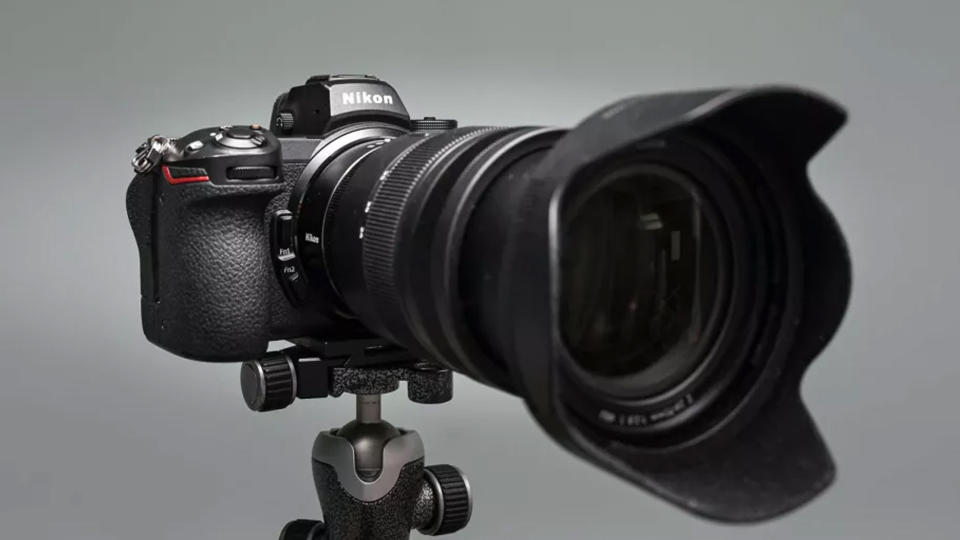
Nikon Z7 II
An excellent all rounder that's especially good for astro and low light photography.
Type: Mirrorless | Sensor: Full frame | Megapixels: 45.8 megapixels | Lens Mount: Nikon Z | ISO Range: ISO 64 - 25600( expands to 32 - 102400) | Stabilization: 5-axis sensor-shift Image Stabilization
Excellent ISO handling
Electronic view finder is excellent
Will price beginners out
Overboard if you're only shooting astro
Following on from the above Z6 II, here we have the Z7 II. Although visually identical to the Nikon Z6 II, there are some differences in terms of image quality and functionality.
One of the notable improvements of the Z7 II is the dual memory card slots which give greater peace of mind when out on a shoot. You can either switch to save images on one card or the other, or use one as a backup — in this case all of your images are saved to both cards so should one corrupt, you'd still have all of your photos saved on the other one.
The other obvious difference is the 45.7MP v the Z6 II's 24.5 megapixels, giving mind-blowing resolution. While this isn't crucial for excellent astro shots, you may benefit from the extra megapixels if you're going to be producing large prints or shooting other styles of photography such as landscape or shooting long lens wildlife photos, where stunning detail makes all the difference.
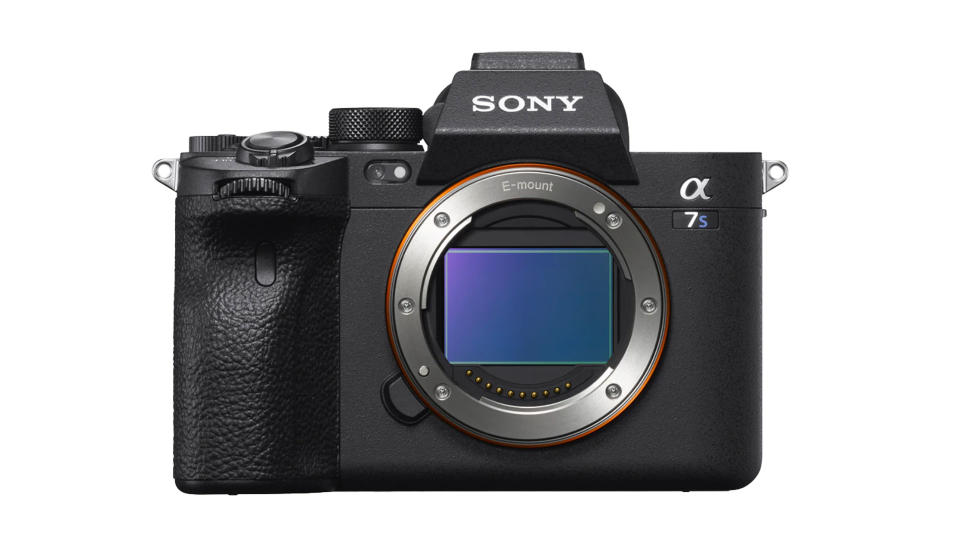
Sony a7S III
Best for low light video recording for filmmakers and online content creators
Type: Mirrorless | Sensor: Full frame | Megapixels: 12.1 | Lens mount: Sony E | ISO Range: 80-102,400 (expandable 40-409,600) | Stabilization: 5-axis sensor-shift
High-end video resolution and performance
Best ISO handling in its class
Low resolution stills compared to others
Relatively expensive if not into video
Released just over two years ago, the Sony a7S III is an astoundingly excellent mirrorless camera and perfect for low light shooting. Its main aim is to please the videographers and filmmakers who want a powerful, compact mirrorless camera that records 4K video at 120FPS for ultra-slow motion. It also keeps up with professional video workflows with a 16-bit RAW HDMI output while simultaneously recording in-camera.
It captures 12.1MP stills photographs that are incredibly low compared to the latest mirrorless cameras, but it doesn't claim to be a stills-oriented camera either. However, it does include 5-axis in-body image stabilization that steadies frames up to a fantastic 5.5 stops for sharper handheld low light photos and smoother video recording.
The maximum expandable ISO range of 40-409,600 is, quite frankly, astounding. This makes it perfect for low light shooting as users can ramp up the ISO sensitivity, making the most of the light available without having to alter their aperture or shutter speed too much to compensate. Combine this with the a7S III's hybrid autofocusing system that can operate as low as -6EV, and you have a recipe for steady, sharp shots no matter little light there is.
Raw images and video can be pushed even further in post-production thanks to the camera's wide 15-stop dynamic range, capturing more detail and data in scenes with extreme contrasts in brightness, for example, a dimly lit portrait on the street next to bright street lights.

Fujifilm X-T4
Best for beginner astrophotographers, the X-T4 perfectly combines simplicity with top notch technology
Type: Mirrorless | Sensor: APS-C | Megapixels: 26MP | Lens mount: X-mount | ISO Range: 160-12800 (with 80–51200 extended output) | Stabilization: 6 stops
Excellent ISO range
Articulating screen
Hard to see controls in the dark
No battery charger, whole camera needs to be plugged in
The X-T4 is an excellent option for low light shooting and astrophotography enthusiasts. The vari-angle screen makes composing shots much more comfortable than without one.
The overall look and feel of the camera, emulating a classic film camera, make it stylish, but the body-mounted dial controls make it easier to use in the dark if you can remember which dial controls what function. The 26.1MP APS-C sensor creates excellent image quality, and there is a wide choice of X mount lenses that fit the X-T4s, adding even more versatility.
The Fuji X-T4 uses the NP-W235 battery and has a CIPA rating of around 500 shots per charge. During our hands-on review, we found this can be much higher when shooting in the daytime but, as expected, long nighttime exposures drain the battery much quicker. The only downside to the battery type is that you need to plug the whole camera in to charge rather than swapping out the battery, so make sure you're fully charged ahead of your shooting session.
The X-T4 comes with 6.5 stops of in-body image stabilization (something the X-T30 II is lacking), excellent low light performance, and a high-speed processing engine, ideal for action or sports photography as well as astro.
Related: DSLR vs Mirrorless cameras
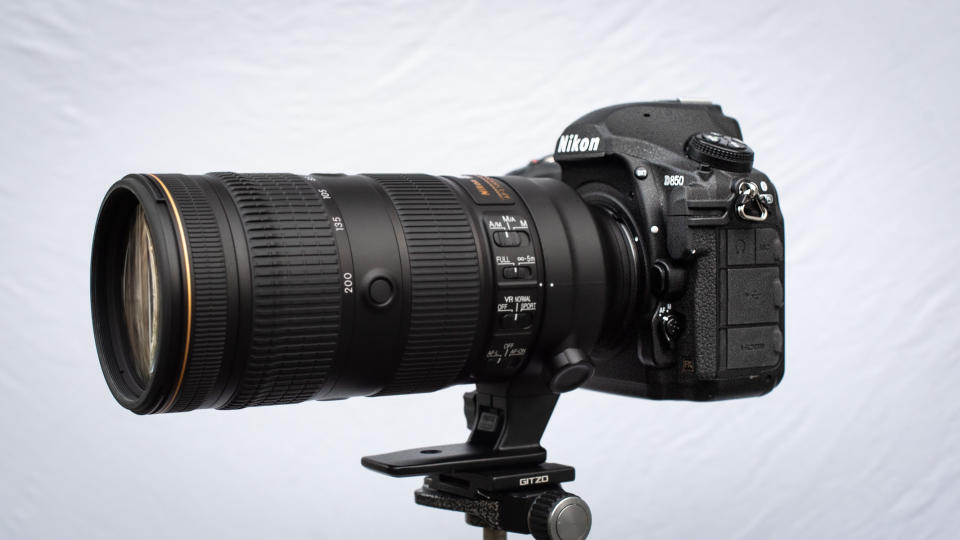
Nikon D850
Possibly the best DSLR for low light photography and videography with features that can match or outcompete contemporary mirrorless models
Type: DSLR | Sensor: Full frame | Megapixels: 45.7 | Lens mount: Nikon F | ISO Range: 64-25,600 (expandable 32-102,400) | Stabilization: None
Huge stills resolution with excellent cropping options
Outstanding ISO range for a DSLR
DSLRs are being phased out
Not as good at low light focusing as its mirrorless counterpart
A camera favored by professionals, the D850 is a real workhorse and is built to last in a variety of environments because it's fully weather-sealed and made from a magnesium alloy. This means it's durable as well as lightweight. Equally useful in the hands of an enthusiast it has a great ISO range considering its now over five years old, and expands up to 102,400. The full frame BSI CMOS sensor handles ISO noise well thanks to the processing ability of the EXPEED 5 image processor. Just take a look at our Nikon D850 review for our full thoughts on this camera.
Sadly, because it's a DSLR there's no in-body image stabilization but F-mount lenses can offer up to 4.5 stops of stabilization (which Nikon calls Vibration Reduction) to steady shots in low light. Choose from a series of stills when shooting in continuous burst mode that captures up to 9FPS, which may not sound like much but when you consider each image is 45.7MP that's a serious amount of data capture. It keeps up with the competition in terms of video too by offering 4K30p video recording with zebra stripes that help identify areas of potential exposure issues.
It's also well equipped for low light video as it autofocuses down to -4EV with an Multi-CAM 20K autofocus sensor module with TTL phase detection and 153 focus points to choose from. There's a hot shoe and PC sync connection on the body for linking up with on and off-camera lighting when low light scenes need a little extra splash of fill light. Face-priority autofocus enables easier autofocusing on portrait subjects, without the need to switch to manual.
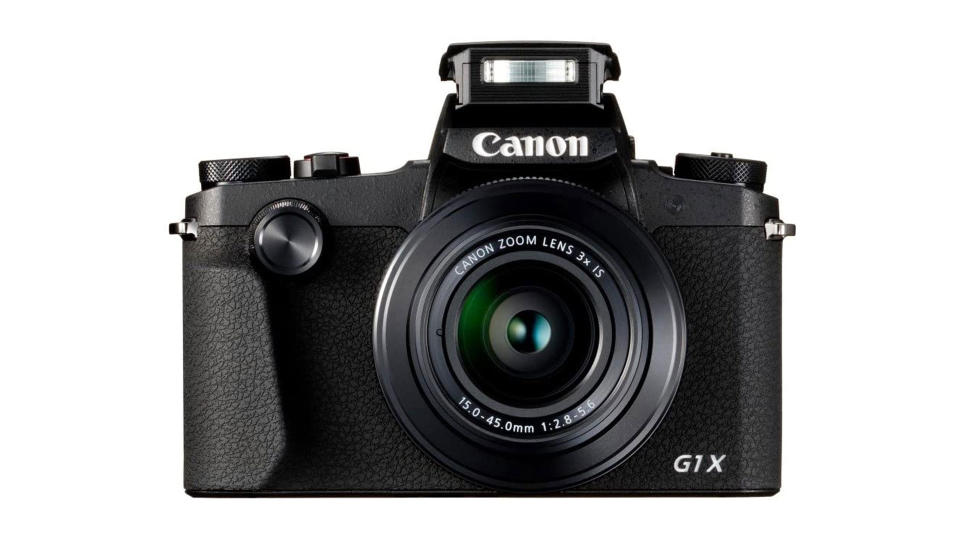
Canon PowerShot G1 X Mark III
Best compact camera for low light — if you want to keep it simple and small, this is a great pick
Type: Compact | Sensor: APS-C | Megapixels: 24.2 | Lens mount: N/A | ISO Range: 100-25,600 | Stabilization: Four stops
In-body stabilization
Raw file shooting
Fixed lens design
A little costly for a point-and-shoot
Generally, compact cameras (cameras with fixed lenses) aren't all that good for low light photography because their image sensors are small and can't handle image noise very well. But Canon have stepped over this issue by issuing the PowerShot G1 X Mark III with a DSLR-like APS-C image sensor with 24.2MP.
It can also shoot raw files, making it easier to remove image noise, enhance exposure, and style images in editing software. Where it doesn't quite keep up with modern DSLRs though, is that it only shoots full HD 1080 60p video. However, when you consider that this camera is aimed at beginners hoping for more manual options to expand their skill set, this is more than enough to start creating video content if required. When shooting movies the 5-axis Advanced Dynamic IS keeps things smooth for professional-looking movie quality.
The all-in-one design centers on the fixed lens, which zooms from a wide 15mm to 45mm in focal length for 3x optical zoom. Its electronic viewfinder helps photographers and video shooters to see in the dark as they can ramp up the perceived brightness of low light scenes. When shooting in low light and at longer handheld exposure times, the camera benefits from four stops of image stabilization to steady the scene and maintain sharp photos. Fast and reliable focusing comes from the Dual Pixel CMOS AF and continuous shooting of 7FPS means you should have plenty of opportunities to choose from.
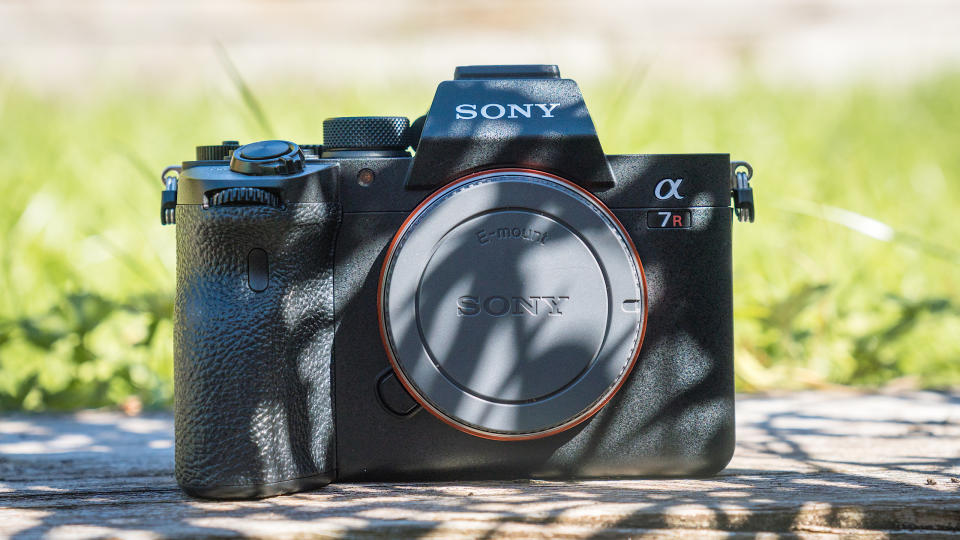
Sony A7R IV
A great all-rounder The A7R IV is in a class of its own and gives fantastic detail even in the darkest shadows
Type: Mirrorless | Sensor: Full frame | Megapixels: 61 | Lens mount: Sony E | ISO Range: 100-32,000 (expanded 50-102,400) | Stabilization: In body OSS
In-body Optical Steady Shot
Awe inspiring image quality
An expensive camera
Huge RAW files
Now three years old, the Sony A7R IV is similar to the A7R III (also on this list), but it does have some enhancements, with a price tag to suit.
With a whopping 61-megapixel resolution, the Sony A7R IV can bring out exceptional detail, even in the darkest shadows. It is the highest resolution full-frame camera and shoots 4K max video resolution.
It handles exceptionally in low light, which makes it an excellent choice for astrophotographers. During our review, we found that noise only started to creep in after pushing the ISO to ISO 6400. The battery life is good too, we tested Sony's claim of 670 shots while using the rear screen. We took 2000 shots from a full charge, and the battery still had 65% power. Based on that, we think you would be able to get even more than what Sony claim.
Although the 7.5cm screen is excellent quality, the only thing that would make this camera better for astrophotography is if the screen was fully articulating.
We wouldn't recommend this camera for sports or action photography because of the buffer lag due to the enormous image sizes. But for low light portraiture, astrophotography and landscapes, you can't go wrong with this camera.
Related: Our guide to blue-hour photography
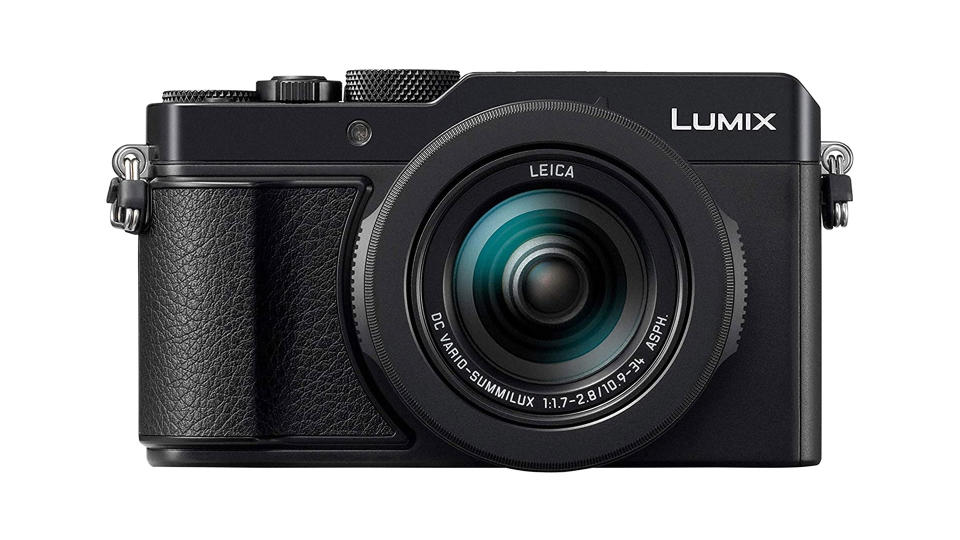
Panasonic LX100 II
The best budget friendly option the LX100 II is a premium compact camera
Type: Compact | Sensor: Micro four-thirds | Megapixels: 17 | Lens mount: N/A | ISO Range: 200 - 25,600 (expandable 100 - 51,200) | Stabilization: Yes
Post focus refocusing feature
Compact body with large MFT sensor
Competitors beat these specs
Fixed lens means restricted use
Billed as a premium compact camera it houses a large micro four thirds image sensor to capture 17MP stills and 4K 30p videos, which, when paired with the fast f/1.7-2.8 24-75mm Leica DC Vario-Summilux lens makes it a great camera for low light shooting.
The micro four thirds sensor takes a real step up in low light ability compared with a standard compact camera's 1-inch sensor, capturing more detail and light to render decent exposures. The wide aperture range of the lens lets the camera drink in as much light as possible to keep shutter speeds shorter and therefore allow darker low light handheld shooting.
There's plenty of creative control over imaging on this compact camera, with controls on the top of the camera reminiscent of an SLR or rangefinder camera with separate dials for shutter speed and exposure compensation.
The LX100 II has another unique feature up its sleeve in the form of post focus. Post focus allows photographers to choose the focus point (within reason) in a photo after the image has been taken. That's crucial for low light photography where autofocus notoriously struggles with nailing focus, and even manual focusing isn’t ideal since it's hard to see the subject. It means that even if the focus point is missed the photographer can move it after the fact and perfect photos without missing the moment.
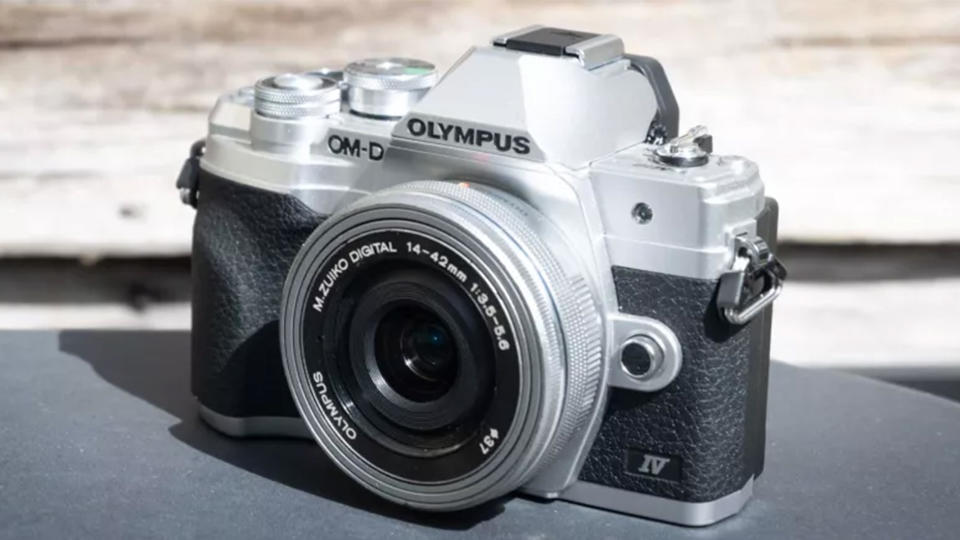
Olympus OM-D E-M10 Mark IV
Best micro four thirds camera, This Olympus is an excellent MFT that captures gorgeously detailed stills
Type: Mirrorless | Sensor: Micro four thirds | Megapixels: 20.3 | Lens mount: Micro four thirds | ISO Range: 80 - 25,600 | Stabilization: 5-axis
Incredible stills resolution for MFT sensor
Lightweight and portable
Comprehensive 5-axis IBIS
Plastic construction feels a little cheap
The latest in this series of mirrorless MFT cameras, Olympus have pushed their technology seemingly to the limits by boosting the image sensor detail, whilst retaining an interchangeable lens system which favors beginners and enthusiasts that want the option to expand their kit when needed.
While reviewing the Olympus OM-D E-M10 Mark IV we found the in-body image stabilization to be truly superb which works across the 5-axis range to provide an equivalent of 4.5 stops of optical stabilization, which is impressive when you consider its price point. A fast 8.7FPS burst speed is more than capable of capturing action as it unfolds, giving low light shooters who are sometimes disappointed with single shot mode shooting due to camera shake blur, plenty of extra chances to nail the shot.
The electronic viewfinder is big and bright with 2.36 million dots for a detailed display, and the rear screen is a tiltable 3-inch touchscreen that allows for more awkward shooting angles without the photographer having to lay down or climb up to see the composition. It even flips down 180 degrees for selfie shooting.
Being an inexpensive MFT camera does have its limits though, and the autofocus detection range is where it suffers compared to the much more expensive mirrorless models on this list, managing only -2EV autofocus range, but the ISO range is still impressive topping out at 25,600.
How we test the best camera for low light photography
In order to guarantee you're getting honest, up-to-date recommendations on the best cameras to buy here at Space.com we make sure to put every camera through a rigorous review to fully test each product. Each camera is reviewed based on a multitude of aspects, from its construction and design, to how well it functions as an optical instrument and its performance in the field.
Each camera is carefully tested by either our expert staff or knowledgeable freelance contributors who know their subject areas in depth. This ensures fair reviewing is backed by personal, hands-on experience with each camera and is judged based on its price point, class and destined use. For example, comparing a 60MP full-frame mirrorless camera to a sleek little crop-sensor DSLR wouldn't be appropriate, though each camera might be the best performing product in its own class.
We look at how easy each camera is to operate, whether it contains the latest up-to-date imaging technology, whether the cameras can shoot high-quality stills photos and high-resolution video and also make suggestions if a particular camera would benefit from any additional kit to give you the best viewing experience possible.
With complete editorial independence, Space.com are here to ensure you get the best buying advice on cameras, whether you should purchase an instrument or not, making our buying guides and reviews reliable and transparent.

